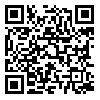Volume 11, Issue 2 (Occupational Medicine Quarterly Journal 2019)
tkj 2019, 11(2): 67-78 |
Back to browse issues page
Research code: ---
Ethics code: IR.SSU.SPH.REC.1397034
Clinical trials code: ----
Download citation:
BibTeX | RIS | EndNote | Medlars | ProCite | Reference Manager | RefWorks
Send citation to:



BibTeX | RIS | EndNote | Medlars | ProCite | Reference Manager | RefWorks
Send citation to:
Mirzabeigi H, Halvani G, Zare S, Anooshe V, Jambarsang S, Soltani Rafsanjani N A. Evaluating and managing the probability of medical errors in nursing personnel using the HEART method. tkj 2019; 11 (2) :67-78
URL: http://tkj.ssu.ac.ir/article-1-1042-en.html
URL: http://tkj.ssu.ac.ir/article-1-1042-en.html
Hadi Mirzabeigi * 

 , Gholamhossein Halvani
, Gholamhossein Halvani 

 , Sajad Zare
, Sajad Zare 

 , Vidasadat Anooshe
, Vidasadat Anooshe 

 , Sara Jambarsang
, Sara Jambarsang 

 , Nasim Ali Soltani Rafsanjani
, Nasim Ali Soltani Rafsanjani 




 , Gholamhossein Halvani
, Gholamhossein Halvani 

 , Sajad Zare
, Sajad Zare 

 , Vidasadat Anooshe
, Vidasadat Anooshe 

 , Sara Jambarsang
, Sara Jambarsang 

 , Nasim Ali Soltani Rafsanjani
, Nasim Ali Soltani Rafsanjani 


Yazd University of Medical Sciences Yazd,Iran , mirzabeygihadi@gmail.com
Abstract: (3465 Views)
Introduction: Medical errors cause serious and often preventable injuries to patients. Studying human errors and their use as an opportunity for learning is a key factor in the effort to improve patient safety and quality of care in the hospitals. The purpose of this study was to identify and evaluate human errors to reduce their risks in nursing personnel using the Human Error Evaluation and Reduction (HEART) method.
Materials and Methods: This cross-sectional descriptive study was performed in one of the hospitals of Rafsanjan in 1977. Initially, hierarchical task analysis was performed using HTA method and nurses' tasks were identified. In the next step, the probability of their human errors during work for all tasks was determined using the HEART method and the factors and conditions that were effective in causing the error were determined. Finally, in light of these conditions, suggestions were made to reduce the likelihood of these errors occurring.
Results: The mean (standard deviation) human error score for the different tasks of nursing job was 1.79 (3.44). The maximum likelihood of error occurring in relation to the task of regulating and applying DC shock in emergencies was determined as 14.48. The least probability of error occurring for skin care task was 0.0014. The results of this study regarding the conditions that can lead to human error in nurses showed that the most important error generating conditions in nurses were novice and inexperienced, high stress, unreliable work tool, lack of control system transparency, lack of clarity and timely and direct confirmation of action. The highest mean human error probability score for Type C tasks was 4.34. Also the mean human error probability score for D, E and G tasks were 0.225, 0.198, and 0.00206 from right to left, respectively. The results of Kruskal-Wallis nonparametric test showed that there was a statistically significant difference among the mean scores of human error probability scores of different groups (P-value <0.001).
Conclusion: Considering the critical consequences of human errors in nurses' work activities, developing specialized guidelines for their various activities, providing specialized training, as well as retraining of scientific and practical skills, increasing the workforce, reducing overtime, regular work shifts to improve the reliability of medical staff performance and familiarize staff with the risks that may result from errors in patients are necessary to reduce the likelihood of errors occurring in nurses.
Materials and Methods: This cross-sectional descriptive study was performed in one of the hospitals of Rafsanjan in 1977. Initially, hierarchical task analysis was performed using HTA method and nurses' tasks were identified. In the next step, the probability of their human errors during work for all tasks was determined using the HEART method and the factors and conditions that were effective in causing the error were determined. Finally, in light of these conditions, suggestions were made to reduce the likelihood of these errors occurring.
Results: The mean (standard deviation) human error score for the different tasks of nursing job was 1.79 (3.44). The maximum likelihood of error occurring in relation to the task of regulating and applying DC shock in emergencies was determined as 14.48. The least probability of error occurring for skin care task was 0.0014. The results of this study regarding the conditions that can lead to human error in nurses showed that the most important error generating conditions in nurses were novice and inexperienced, high stress, unreliable work tool, lack of control system transparency, lack of clarity and timely and direct confirmation of action. The highest mean human error probability score for Type C tasks was 4.34. Also the mean human error probability score for D, E and G tasks were 0.225, 0.198, and 0.00206 from right to left, respectively. The results of Kruskal-Wallis nonparametric test showed that there was a statistically significant difference among the mean scores of human error probability scores of different groups (P-value <0.001).
Conclusion: Considering the critical consequences of human errors in nurses' work activities, developing specialized guidelines for their various activities, providing specialized training, as well as retraining of scientific and practical skills, increasing the workforce, reducing overtime, regular work shifts to improve the reliability of medical staff performance and familiarize staff with the risks that may result from errors in patients are necessary to reduce the likelihood of errors occurring in nurses.
Type of Study: Research |
Subject:
Safety and occupational accidents
Received: 2019/10/10 | Published: 2019/11/1
Received: 2019/10/10 | Published: 2019/11/1
Send email to the article author
| Rights and permissions | |
 |
This work is licensed under a Creative Commons Attribution-NonCommercial 4.0 International License. |




